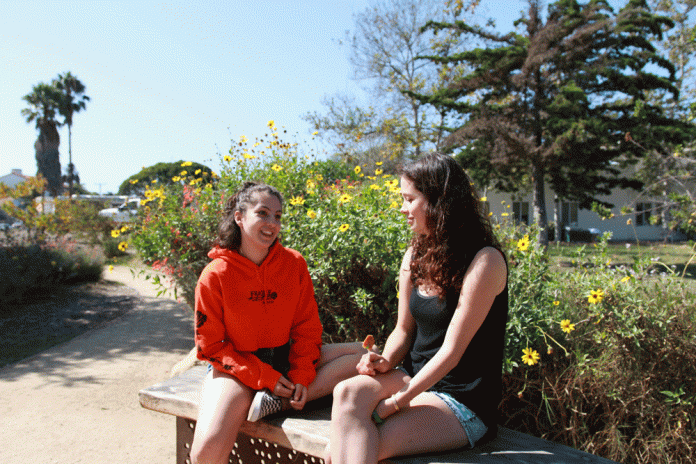The Bottom Line Staff Report
Year after year, only one aspect of the University of California, Santa Barbara experience remains the same. And it’s more than just the beautiful location.
Isla Vista is a 1.86 square-mile block of land that’s endured centuries of weathering and erosion, taking the shape of the diverse communities that have lived in it. And though not all students will spend time during their college careers living there, all come to know it as central to being a UCSB student.
I.V. predates UCSB, getting its name from the native Chumash people who first settled on the land where the university now sits. I.V. has existed long before and long after any single generation of UCSB students passed through.
The students, of course, are the loudest, most impactful demographic in the neighborhood — the most prominent category of people in the county voting bloc. They’ve shaped the culture of I.V., parading through the streets, reading in the parks, and celebrating their youth in the ocean air and on the beach.
Not all of the student spirit has been idyllic. Waves of protesters set a Bank of America branch on fire on Feb. 25, 1970, condemning a government entrenched in the Vietnam War and prompting a brief occupation by the National Guard.
No such fire was lit on Nov. 9, 2016, when students marched through the streets to protest the most shocking of election results — but their zeal was palpable.
However, UCSB’s student population is not the only group to live in the beachside town. A whole community of locals, many of them minorities, carries on year after year, working to better their lives and families. Journeying deeper into the community reveals students on skateboards, but also parents walking their children home from I.V. Elementary School. The neighborhood as a whole is not merely a party town but an interconnected web of fledgling adults, young families, and older residents alike.
The community faced perhaps its biggest challenge together after May 23, 2014, when a horrific tragedy momentarily silenced the streets, reminding I.V. of how close it was to the thoughtless realities of the outside world.
But I.V. has marched — or rather, surfed — on, continuing to flourish together, even though differences still exist among its residents about what’s best for the future. For all of I.V.’s trials and tribulations, there’s a lot going on within its streets.
Welcome to the sunniest plateau above the Pacific Ocean, a true paradise.
Beaches
The Isla Vista mesa sits on top the Pacific Ocean, with mountain bluffs towering 46 feet in the air. The beaches along the cliffs have become one of the most popular elements of the coastal community, among students and visitors alike.
How do the beaches stay clean? The Santa Barbara Channelkeeper, a local nonprofit, and the I.V. Surfrider, a student-run branch of the Surfrider Foundation, invest resources to pick up trash on the beaches and clear out pollution.
But a larger problem facing I.V., one extending back decades, is erosion. The waves of the Pacific Ocean have ferociously weathered away the bluffs for years, gradually erasing an entire beachside bike path and forcing homeowners to cut back their properties to satisfy safety concerns. In January, a balcony of an oceanside Del Playa Drive home collapsed.
Santa Barbara County has applied shoreline armoring to some of the sections of the bluffs, placing seawalls and jetties to prevent the erosion from further threatening houses.
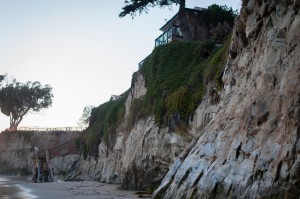
However, shoreline armoring can cause its own problems. Bulwarks set in the beach ground can lead to the tide pulling back too much sand, which in turn shrinks the beaches.
Fourth year environmental studies major Benny Drescher, a representative for I.V. Surfrider, detailed the problem. “If more cement armoring and rip rap were to be added to the I.V. bluffs,” he said, “I believe we may see a dangerously consistent loss of beach during winter. The presence of a compact, sandy shoreline is a critical buffer to coastal erosion, and we could lose that resource in the future.”
Erosion will be a long-term battle for I.V. homeowners and those looking to preserve the beaches. For now, however, the beaches remain one of I.V.’s biggest attractions.
Self-Governance
Most know that I.V. is not just UCSB’s college town, partly because it’s a much larger community and partly because it’s not actually a town at all. I.V. is designated in the census, which means its population is counted and data is produced for it. But the neighborhood has never had a real local governing body, which makes it an unincorporated community.
Isla Vista’s cluster of compact beachtown housing doesn’t have enough infrastructure to be an actual city — but the size of I.V.’s streets, along with its tightly-packed population, make it one of the more difficult places to legislate.
That hasn’t stopped Santa Barbara County’s Third District from trying to vote laws over Isla Vista’s head. In Aug. 2016, the county proposed a noise ordinance that would have enforced “quiet hours” across I.V. by 10:00 p.m. every night of the week. A prompt community backlash thwarted the plan.
Meanwhile, others haven’t stopped trying to find I.V. a source of self-governance. After years of efforts, a group of locals helped pass Measure E on the Nov. 2016 ballot, creating the I.V. Community Services District. The CSD Board of Directors isn’t quite a governing board, but rather a panel of seven people to oversee I.V.-related programs and projects.
But on the same ballot, self-governance seekers couldn’t secure enough votes to pass Measure F, which would have created a tax — applied to I.V. residents’ monthly utility bills — to fully fund the new district. While UCSB will contribute $200,000 to the district, the CSD is working against the clock to either pass the tax or secure another form of funding before it goes out of existence completely.
Although barely out of infancy, the CSD has gotten started on addressing public safety concerns and expanding community policing efforts. Other CSD powers, like the creation of a parking district (which would require county approval) and mediation between I.V. tenants and their landlords haven’t yet yielded concrete ventures. Over six months into the CSD’s existence, I.V. self-governance is a work in progress.
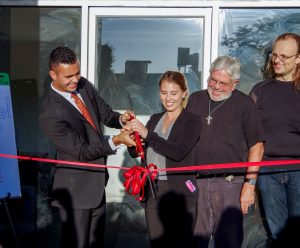
Parks
For a relatively small block of land, I.V. has 25 official district parks. These aren’t typical suburban fixtures, and some are just small patches of grass, but it isn’t uncommon to stumble upon a park bench during a casual stroll through the neighborhood.
Some offer views of the ocean, like the Sea Lookout Park on Del Playa Drive. Others are central to I.V., like Anisq’Oyo’ Park, which is right in center of the Embarcadero loop. Sitting in the middle of People’s Park, south of Anisq’Oyo’, is the I.V. Love & Remembrance Garden, which is dedicated to those lost in the May 2014 tragedy.
Another small form of local government, the I.V. Recreation and Parks District (RPD), manages the various I.V. parks. Each day, a district truck drives by to maintain the parks for the community. The district offers a volunteer program for students to invest their own time to assist in the upkeep.
Rodney Gould, Director of the I.V. RPD, said the district is collaborating with the CSD on several programs, including placing a new shade structure in Children’s Park (found next to Picasso Road and Camino Del Sur), adding fruit trees and irrigation to the Sueno Orchard, and creating a new mural for Estero Park.
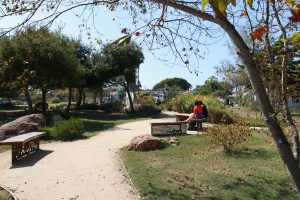
Gould praised the student community for being active in helping maintain the parks, attributing their newfound commitment to the 2014 tragedy, which he called a “catalyst.”
“The entire community mobilized to make changes [after the tragedy],” Gould said, noting they became engaged, along with government agencies, community organizations, and UCSB, to “effect cultural change” in I.V.
“The various efforts and successes are too many to name,” said Gould, ‘but the successes were measurable.”
Homelessness
I.V.’s homeless population has fluctuated over the years. The Central Coast Collective on Homelessness (C3H) releases an annual report on the approximate level of homelessness in different areas in the county, including I.V.
March’s report indicated a 33% increase in homelessness since 2016, but an overall trend of stability since 2013. Organizations like the Pescadero Lofts extend shelter to the homeless in I.V.
One homeless person living in I.V., Lee LaRue, said he has been here for about eight or nine years. He said he became homeless after his business collapsed in 2009. Since then, he has enjoyed I.V.’s climate, which he said doesn’t make it necessary to live in a house. And living in I.V. makes it easy for his daughter to find him.
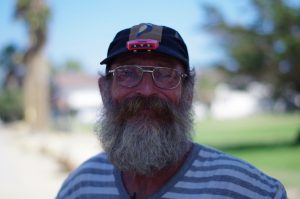
“I don’t need a house,” LaRue told The Bottom Line. “I don’t need a house.” He noted that people often tend to wrongly assume that a homeless person is an alcoholic.
“I’d like to see the stereotyping stopped,” he said. “We need to look at people on an individual basis, instead of grouping people together as all homeless, or all drunks, or all panhandlers, or all one thing or another. That’s just not right.”
Though he acknowledged the tough realities of homelessness, LaRue said he enjoys being in I.V., even without a place to live.
“Becoming homeless in Isla Vista isn’t for everybody,” he said, cracking a smile. “It’s kind of difficult. I hated it. I was running my own business when I became homeless here, and it was too big of a change too fast. But now, I love it — I won’t leave.”
Crime
I.V.’s crime problem has become a hot button issue in the past few years.
The history of I.V. crime, its relation to UCSB’s fast fading reputation for partying, and the policing efforts that have attempted to stifle both, stretch back decades. Events like Halloween weekend or the annual Deltopia have been relatively safe the past few years. The number of out-of-town visitors has declined, along with the number of arrests.
The more pressing issue for I.V. has been violent crime. Both sexual assault and forcible rape reportedly increased in 2016. But recently released mid-year statistics released by the Santa Barbara Sheriff’s Office showed a marginal decline in the number of violent crimes and sexual assaults between mid-2016 and mid-2017.
Law enforcement has made multiple efforts to combat crime, including recently adding a full-time detective to the I.V. Foot Patrol.
Sgt. Rob Romero of the UCSB Police Department said he’s noticed a shift in attitudes among residents. “The community has definitely grown in the almost 24 years I’ve been here,” Romero said. “It’s also a more diverse community, which I believe makes I.V. a better place. I think due to social media, the students have been become more aware of issues facing the community and in turn have become more involved.”
Businesses
Lifespans for I.V. businesses are fleeting. Most do not last long in the condensed, competitive section of I.V. in which the vast majority of businesses reside. Survival is particularly difficult, particularly because of the high cost of rent tied to the buildings on Pardall Road and the Embarcadero loop.
One owner has figured out how to navigate the scene. Michael Hassan opened I.V. Deli Mart 15 years ago, and the business still attracts a large number of customers, especially during the late-night hours.
“Every quarter and every year is different,” Hassan said, “and you constantly have to adjust.”
He pointed to parking concerns as one of the bigger problems facing I.V., along with trash on the streets. And while many in the university community have hailed a reduction in out-of-town visitors as a good thing, Hassan says the decline has hurt a major source of business for the restaurants.
“Police are enforcing stricter curfews,” he said, “with no regard to businesses who depend on late-night customers.”
More corporations are setting up branches in I.V., Hassan noted, which he said is “what the school wants.” But he hopes the students’ loyalty to “mom-and-pop” businesses will remain, he said.
“You cannot predict I.V.,” he said. “It keeps me on my toes and makes me feel young again.”
Hugh Cook and Madison Hallam contributed reporting for this piece.











